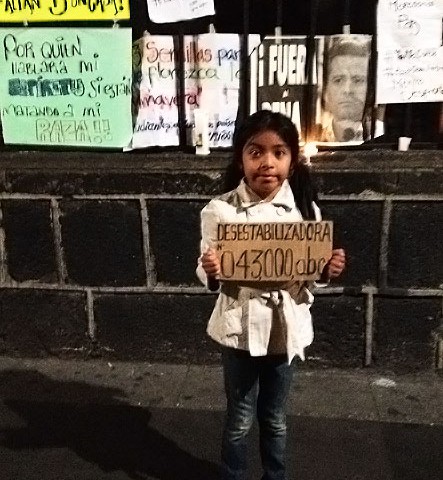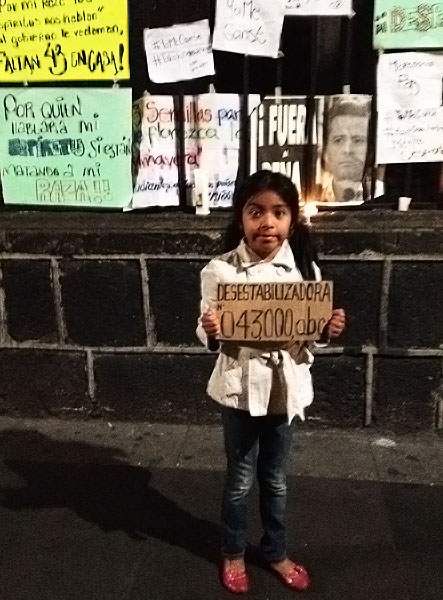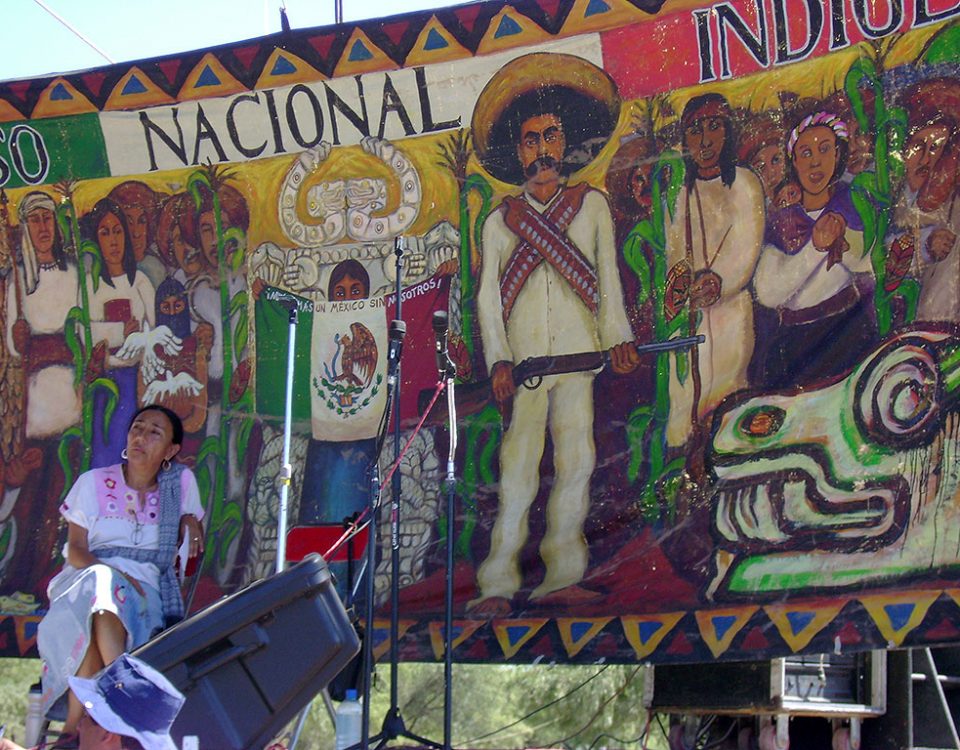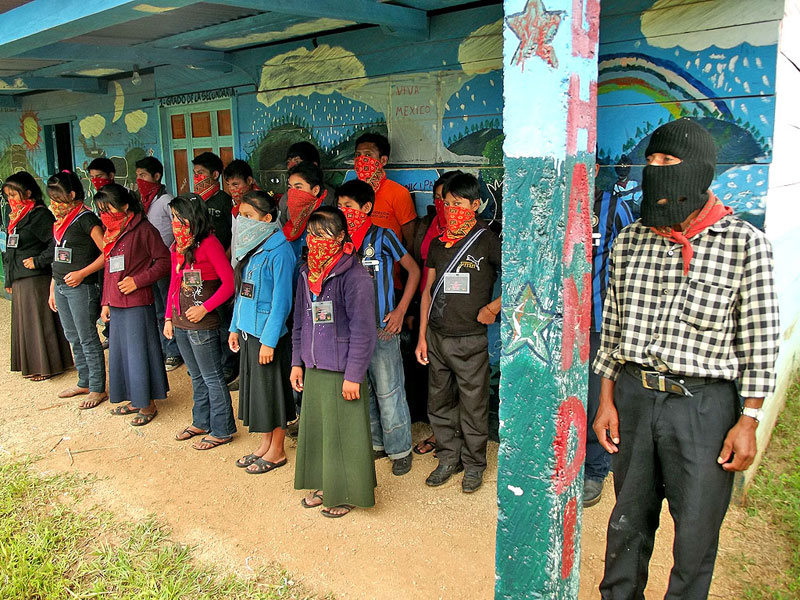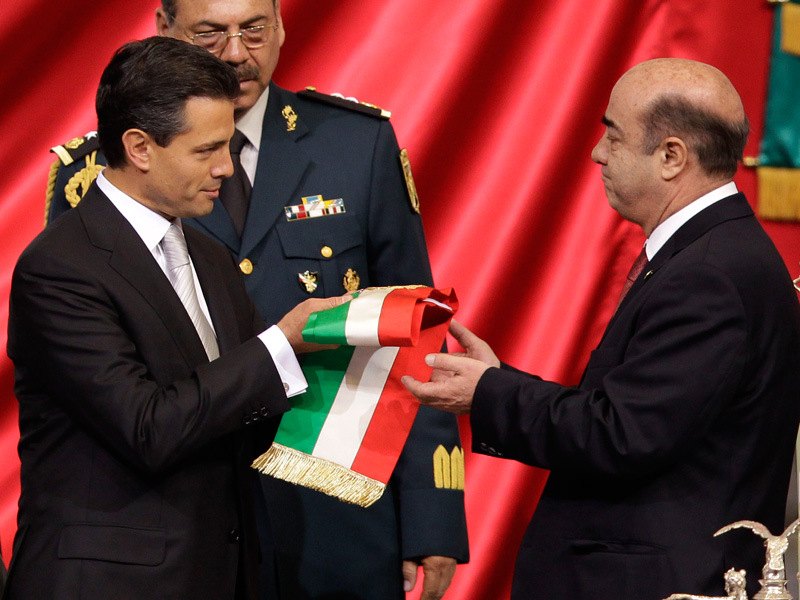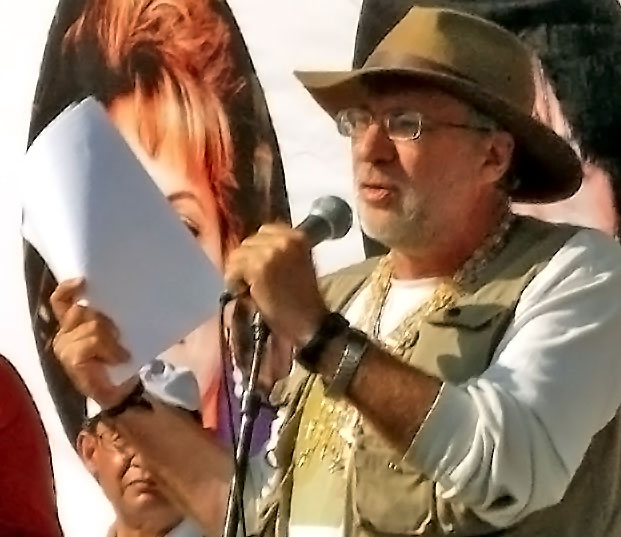2014
23/01/2015ANALYSIS: The Ayotzinapa case, a check against the authorities
21/02/2015The forced disappearance of 43 students of the Normal Rural School of Ayotzinapa in Guerrero, in September, represented a milestone in terms of international perception of Mexico. Just as it had occurred with the Zapatista uprising in 1994, this fact caused an unanimous condemnation. The fact that it is not an isolated case in the country was also stressed. At the end of the year, the international press which had previously welcomed Enrique Peña Nieto’s administration, became daily more critical of his government and the situation in Mexico.
The human rights crisis in the country, which was revealed by Ayotzinapa, was flagged up by civil organizations long before. The NGOs complained that “the humanitarian crisis facing the country based on the testimony and reports of persons disappeared, killed, displaced, tortured, injured has been ignored, rewritten, hidden, dissimulated, and reduced to statistics manipulated by the government”. They stated that “the government’s efforts are concentrated on showing the “Mexican moment” of supposed progress and welfare.”
Despite some media attention earlier this year due to the twentieth anniversary of the uprising of the Zapatista Army of National Liberation (EZLN), the unresolved armed conflict in Chiapas was almost completely absent in the official political agenda. In August, however, the Fray Bartolomé de Las Casas Center for Human Rights (CDHFBC) denounced in a bulletin entitled “Counterinsurgency continues to operate in Chiapas” that “in recent months, the unresolved armed internal conflict in Chiapas has been characterized by a continuous aggression against support bases of the Zapatista Army of National Liberation (BAEZLN), with the action of some social and regional organizations being used for State purposes.”
In the more serious cases, it is worth mentioning: in January, some 300 members of the Democratic Independent Center of Agricultural Workers and Campesinos (CIOAC) severely assaulted Zapatista support base members in the 10th of April ejido, belonging to the 17th of November autonomous municipality, Morelia Caracol. The Zapatistas requested help at the San Carlos hospital in Altamirano, but the aggressors detained the rescuers for two hours, stripped and assaulted the nuns in the vehicle, and seized the ambulance and a truck. On May 2, members of the Green Ecologist Party of Mexico (PVEM), the National Action Party (PAN), and the Historical Independent Center of Agricultural Workers and Campesinos (CIOAC-H) attacked support bases of the Zapatista Army of National Liberation (BAEZLN) in the La Realidad ejido, Las Margaritas municipality (official), governing seat of a Zapatista Caracol (autonomous region). As a result of the attack, the Zapatista support base member José Luis Solís López (known as Galeano) died. In August, finally, BAEZLN belonging to the Rebel Zapatista Autonomous Municipality (MAREZ) San Manuel, in the official municipality of Ocosingo, from the La Garrucha caracol were displaced.
It is worth noting that, in June, the Fray Bartolomé de Las Casas Center for Human Rights denounced acts of surveillance and harassment against its members as well as members of other organizations. One of those acts occured where the caravan of Solidarity bound for La Realidad was assembling after the aggressions in this place in May.
Despite those aggressions, the EZLN did not lose his ability to take initiatives: on May 24, more than 4,000 BAEZLN, militia, members of the EZLN’s General Command, and hundreds of persons in solidarity from national and international civil organizations met in the La Realidad community to pay their respects to José Luis Solís López, “Galeano”. SCI Marcos announced his “death” and explained that his figure was just a media composite image (pantomime) used to attract attention because it suited the interests of the EZLN, adding that the “Subcomandante farce” was no longer necessary. This change took place within a logic of internal reforms that will lead to a completely indigenous leadership for the movement: “the change of command is not being done due to illness or death, or because of internal displacement or purging. It happens logically given the internal changes that the EZLN has made and is making […]. But some scholars are unaware of other replacements: The one of class: from the enlightened middle class to the indigenous peasant. The one of Race: From mestizo leadership to purely indigenous leadership.
In August, the First Meeting of the Zapatista Peoples with the Indigenous Peoples of Mexico took place once again in La Realidad. Some 1,300 Zapatista delegates and more than 300 indigenous representatives of the National Indigenous Congress (CNI) participated in the event. They denounced the different situations of plundering that indigenous peoples confront in the country, declaring that “today we say to the powerful, to the companies and bad governments led by the criminal supreme leader of the paramilitaries Enrique Peña Nieto that we won’t surrender, we won’t sell out, and we won’t give up.” Finally, between December 2014 and January 2015, the “First Global Festival of Resistance and Rebellion against Capitalism” was organized with activities in different Mexican States and ended in Chiapas. On December 31, Subcomandante Insurgente Moisés stressed that “what is now most urgent is the truth and justice for Ayotzinapa,” given that “the most painful and indignant reality is that the 43 are not with us.” The EZLN had ceded its place to the relatives of the 43 disappeared and students from Ayotzinapa during the Festival.
Generally speaking, impunity was an omnipresent subject on the civil agenda. In October, the United States Supreme Court rejected the appeal filed by 10 people who charged the former Mexican President Ernesto Zedillo Ponce de León (1994-2000) for the Acteal massacre (1997). In November, three people indicted for the same massacre were released. Currently, only two people remain imprisoned for these acts. The massacres of Acteal, Viejo Velasco (Ocosingo , 2006) and the violence in the Northern Zone (1995-2000) were presented in the Permanent Peoples’ Tribunal (TPP), initiative that ended this year with a condemnationof the Mexican State.
An omnipresent question in terms of human rights has been forced displacement. Although the displaced families of Colonia Puebla, Chenalhó municipality finally returned to their homes in April, they called the move a “return without justice.” In other cases, the displaced from Banavil (Tenejapa municipality) and Aurora Ermita (Pueblo Nuevo Solistahuacán) publicly denounced the conditions in which they find themselves, the impunity as well as the lack of response made by the authorities.
Finally, in observance of the 40 years since the Indigenous Congress of 1974, in January in San Cristóbal de las Casas the Pastoral Diocene Mother Earth Conference was held, which echoed many of the denunciations regarding land and territory made throughout the state. Among other agreements, participants at the Congress decided to block mining operations (which continue to advance, for example in Chicomuselo) and government policies that negatively affect the interests of communities. For instance, one of the sources of mobilization and acts of harassment in 2014 was the opposition to the construction of the mega-highway between San Cristóbal de Las Casas and Palenque. Two other high-profile cases occurred in the Biosphere Reserve of Montes Azules and in the ejido of San Sebastián Bachajón where the entrance to the waterfalls of Agua Azul is.

